
Ralph Bottrill, Senior Geologist, Mineral Resources Tasmania
Published in the National Rock Garden Newsletter No. 26, December 2023
Mineral Resources Tasmania is coordinating the acquisition of a large block of witherite from the Rosebery base metal mine for the National Rock Garden in Canberra (Figures 1 and 2).
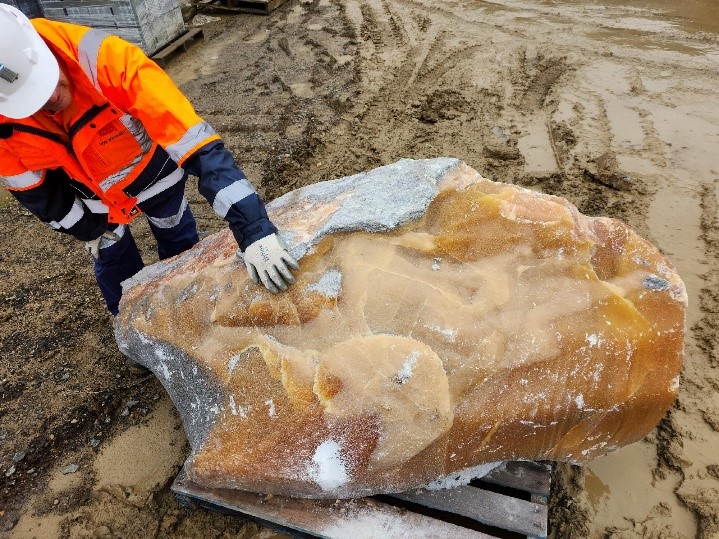
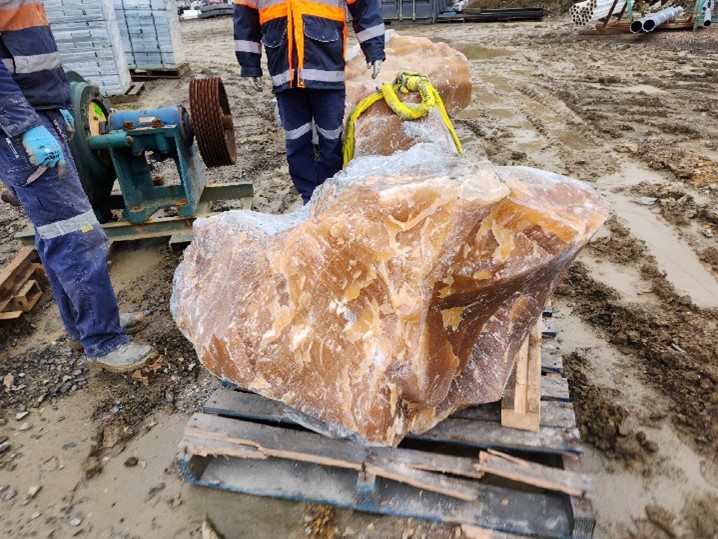
Witherite was named after William Withering (1741–1799), an English physician and naturalist, who first described the mineral in 1784, from England. A barium carbonate (BaCO3) mineral, witherite is the barium analogue of aragonite (a common, naturally occurring crystal form of calcium carbonate, CaCO3), but witherite is far less common. It has been found to be very widespread in many ore deposits worldwide, but is rarely present in large and rich quantities, as is seen in the Rosebery mine.
Witherite can be colourless, white, or pale shades of grey, yellow, orange and pink, and is colourless in transmitted light. It has a vitreous to resinous lustre, with a high specific gravity of 4.3, meaning that the weight of witherite is 4.3 times the weight of an equivalent volume of water. Its low Mohs Hardness of 3– 3.5 indicates that witherite is quite soft and can be quite easily scratched by piece of copper or iron. While it is orthorhombic in crystal structure, witherite specimens are usually massive (have no distinct crystal shape) or occur in pseudo-hexagonal, cyclically twinned crystals rather like aragonite (Figures 3 and 4).
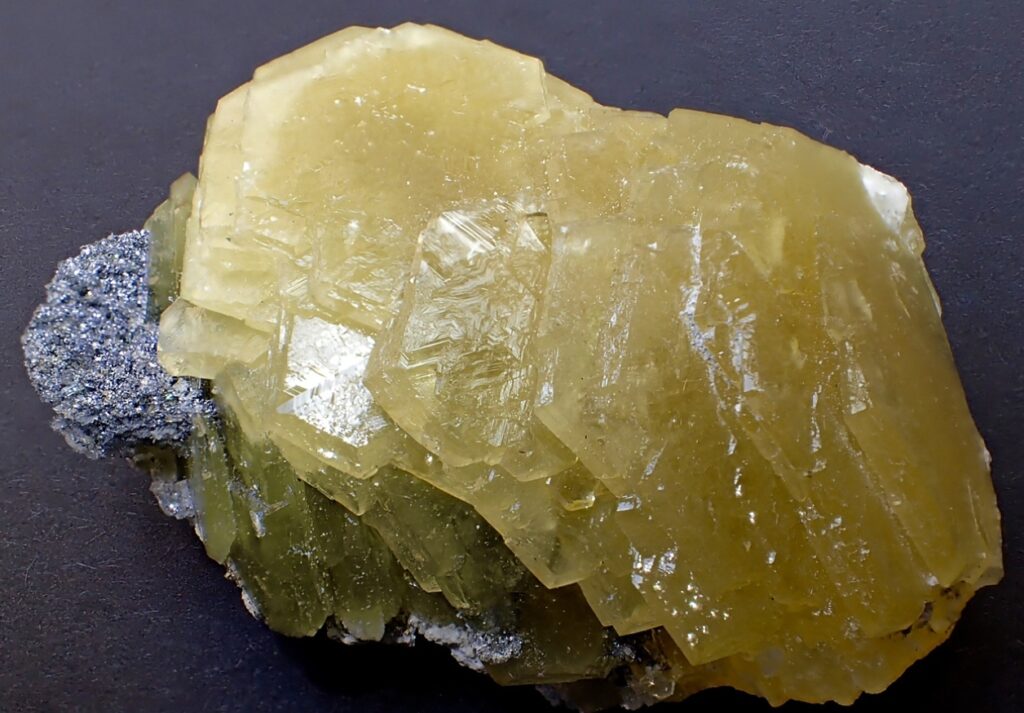
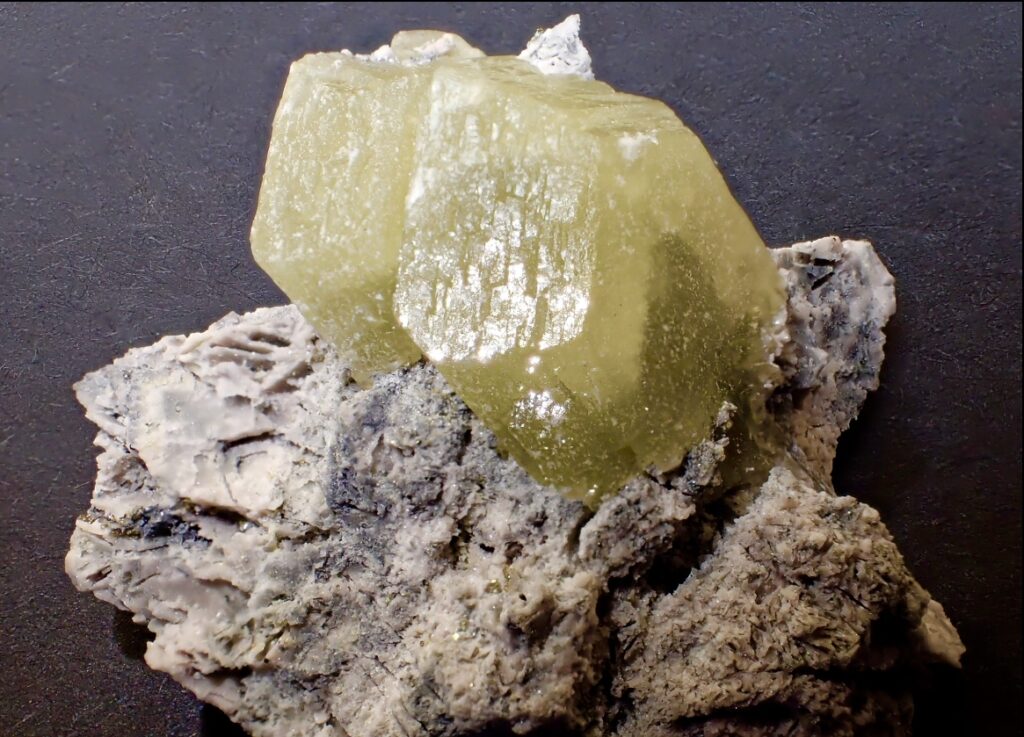
Witherite is fairly insoluble but toxic if ingested, and it has been used as a rat poison. However, handling of witherite is not a major cause of concern as long as you avoid breathing in dust (such as may be generated by grinding, sawing or trimming specimens) and you wash your hands after handling.
Witherite occurs with some rarer barium minerals in the Rosebery mine, including barytocalcite, alstonite and harmotome. Sphalerite, pyrite and galena are also commonly associated with it there. It occurs in large fracture zones (probable faults), mostly in the Y lens (a part of the orebody), commonly with large, cavernous open spaces lined with sparkling crystals. The occurrence of these minerals is of world significance, and the specimens recovered are amongst the best in the world.
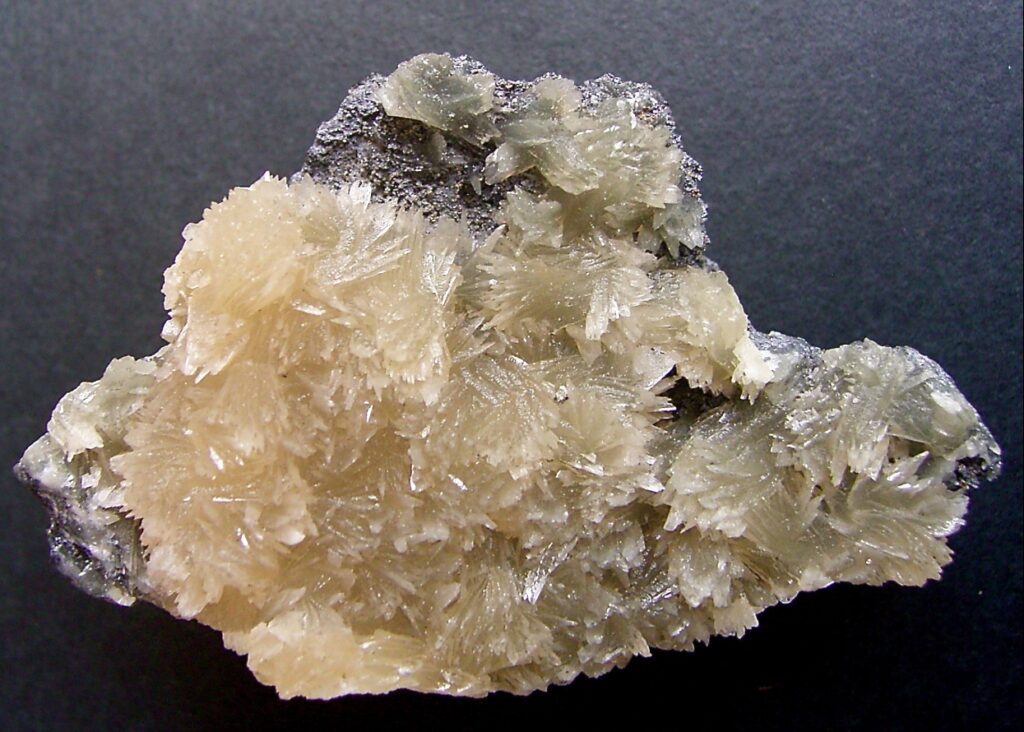
The origin of this Ba-rich material is uncertain. The Rosebery orebody is generally considered to be a VHMS deposit, with numerous lenses of stratabound Pb-Zn-Fe sulphides with significant Cu, Ag, Au, Mn carbonates and baryte, hosted in Cambrian volcaniclastics of the Mt Read Volcanics. The ores were remobilised slightly during Late Devonian by a granite intrusion, forming zones variably rich in Mn-rich garnet, rhodonite, danalite and tourmaline. It seems likely that this Devonian alteration also remobilised some of the syngenetic baryte into open fracture zones, crystallising as various barium carbonates and silicates.
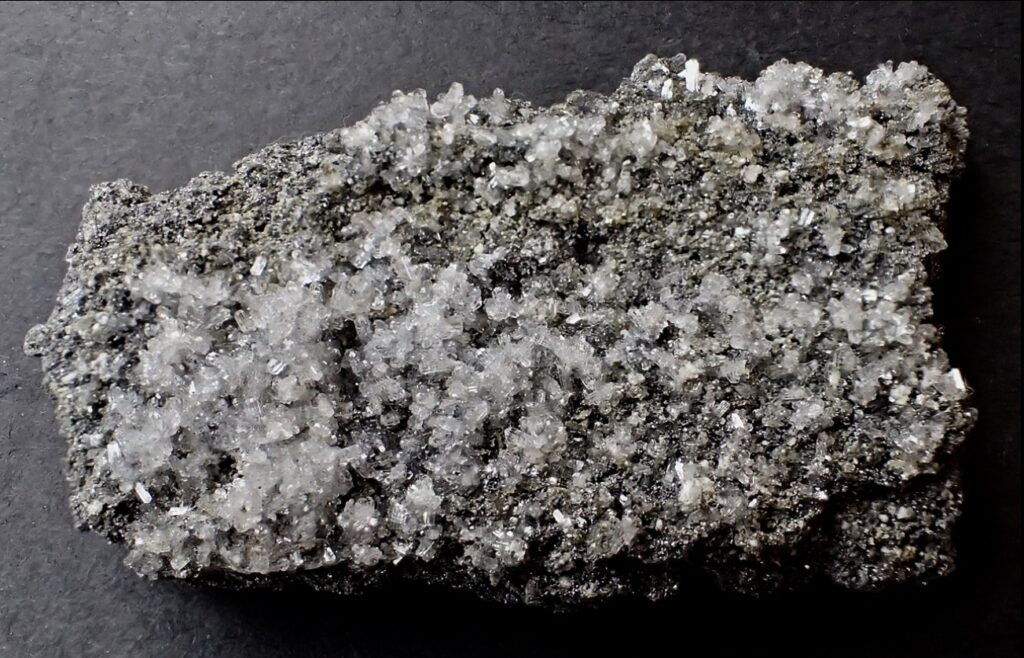
References
Bottrill, R.S., Goemann, K and Woolley, R.N., in prep. Mineralogical Analyses, Rosebery. MRT Mineralogical/Petrology Report LJN2018-080.
Green, David & Schodlok, M., 2016. Characterisation of carbonate minerals from hyperspectral TIR scanning using features at 14 000 and 11 300 nm. Australian Journal of Earth Sciences. 63(8), 951–957 https://doi.org/10.1080/08120099.2016.1225601.
Mindat. Witherite from Rosebery Mine, Rosebery, Rosebery district, West Coast municipality, Tasmania, Australia. https://www.mindat.org/locentry-690609.html. Last accessed: 20 December 2023.


